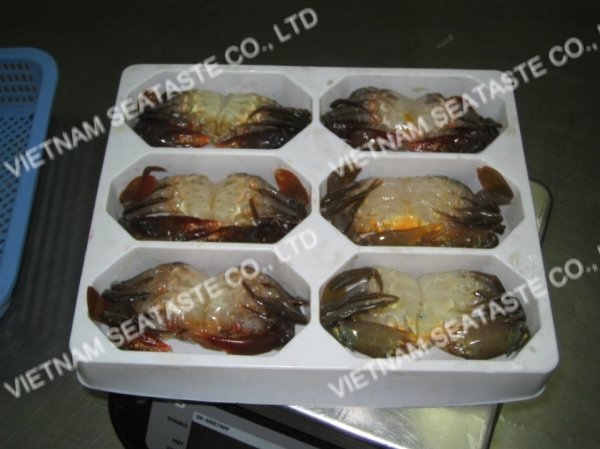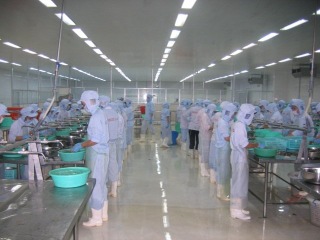
|

Soft Shell Crab ( Scylla serrata )
Soft-shell crabs are one of America's favorite seafood delicacies. While all crabs shed their shells to grow, only a few species of crab can actually be eaten in this form. The blue crab is the only commercially available soft-shell product. The scientific name, Callinectes sapidus , is derived from Latin and Greek. Calli = beautiful; Nectes = swimmer; sapidus = savory. The translation is not only accurate but surprisingly poeticthe beautiful, savory swimmer.
Blue crabs grow rather rapidly, 12 - 18 months, from the juvenile stage to adulthood. A full-grown blue crab will measure nearly 8 inches across. During its lifetime the blue crab will go through several growth stages. In order for a blue crab to lose its shell, the body of the crab physically grows 30%. The commercial crabbers will harvest the blue crab and place it in floating tanks according to its expectant shed dates. The crab expert looks for a faint line next to the crab's paddle-like finlet (backfin). The color of this line will determine when the crab is about to shed its shell. What crabbers refer to as a "green" crab is a crab that is just entering the shedding stage. The "green" crab will have a white line on the backfin and will most likely shed its shell in approximately 7 - 10 days. If the line is pink, the crab is likely to shed within 2 days and probably not longer than one week. If the little line on the backfin is red the crab is likely to shed its shell at any time.
Soft-shells are split up into 5 basic sizes; whales, jumbos, primes, hotels and mediums. A sizing and weight chart is provided as follows:
| SIZE | DIMENSIONS | AVERAGE WEIGHT | DOZENS PER TRAY | DOZENS PER CASE |
| Whales | 5 ½ inches + | 5.9 oz | 2 | 6 |
| Jumbos | 5 - 5 ½ inches | 4.5 oz | 3 | 9 |
| Primes | 4 ½ - 5 inches | 3.3 oz | 4 | 12 |
| Hotels | 4 - 4 ½ inches | 2.5 oz | 5 | 15 |
| Mediums | 3 ½ - 4 inches | 1.8 oz | 6 | 18 |
While the number of soft-shells per tray varies by size and by producer, common shipping quantities are in the table above.
Soft-shell crab is shipped live but typically marketed as fresh. In many cases, the soft-shell crab move when touched. If they are hearty and strong they will arrive live. However, it is most common for them to perish in transit. Motion and heat are the biggest factors affecting the Blue Crabs mortality. The only real indicator to determine the freshness of the blue crab is the smell. Blue crabs that have a distinct ammonia odor should not be served. Blue crab that have perished but have no odor are still fresh enough to eat. A much-debuted measure of freshness is firmness and texture. Firmness is debated because it can be influenced by temperature. A 50-degree "still" will be softer than a 36-degree "still", yet both can have equal freshness.
| Product Type: Crustaceans | Type: Crab | Variety: Soft Shell Crab |
| Style: Frozen | Freezing Process: IQF | Part: Whole |
| Certification: BRC, FDA, GAP, HACCP, ISO | Packaging: 1KG/BOX X 6 / CARTON | Shelf Life: 24 MONTHS |
| Place of Origin: Vietnam | Model Number: SEATASTE-SOFT SHELL CRAB | Brand Name: SEATASTE |
